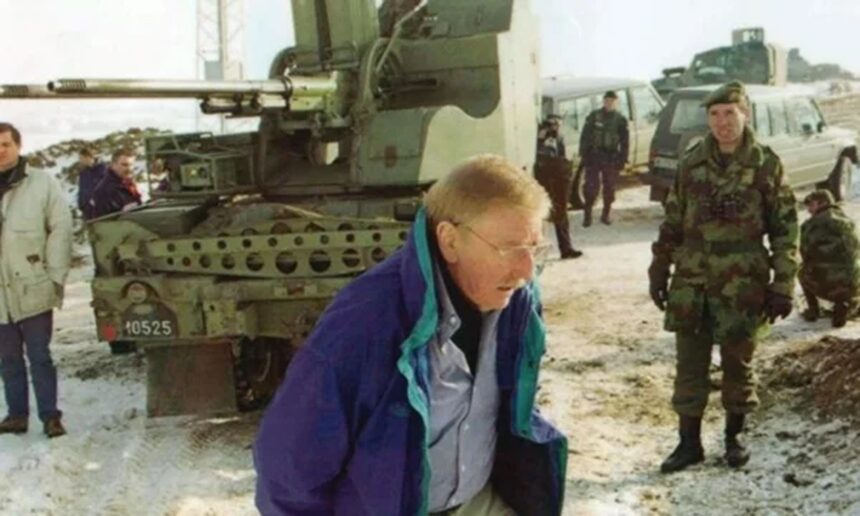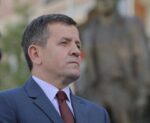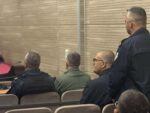Europe had long forgotten such macabre scenes not since the end of World War II had the continent witnessed such atrocities.
The Reçak Massacre was the moment that shook the international conscience and revealed to the world the true face of Serbia’s campaign in Kosovo. Ethnic cleansing, mass executions, and forced expulsions of Albanian civilians crimes that the Serbian state and its military apparatus carried out methodically.
The horror of Reçak in Shtime became the turning point that prompted NATO’s intervention. The world finally saw what Kosovo’s Albanians had been enduring systematic annihilation.
“Over 460 massacres were committed by Serbian paramilitary and Chetnik forces,” said Hysni Gucati from the KLA War Veterans Organization in an interview for Inside Story.
The list of atrocities is endless. In Gjakova, April 1999, 376 Albanian men and boys were executed. Their bodies were later found in mass graves in Serbia, in Batajnica.
In Krusha e Madhe, Prizren, 241 civilians were killed in March 1999. The entire village was burned, and the women were forcibly expelled. In Suharekë, over 50 members of the Berisha family were executed inside their home.
In Poklek, 54 civilians, mostly women and children, were burned alive in one house. In Izbica, 147 unarmed civilians were executed in cold blood.
In Peja, 44 civilians were shot. In Qyshk, homes were torched and entire families erased — the village became a symbol of Serbian brutality in the Dukagjini region. The small village of Pastorit in Gjakova suffered a similar fate.
In Rezallë, 98 men were executed and thrown into mass graves. In Dubrava Prison, after NATO bombings, Serbian forces executed 160 prisoners in cold blood.
According to data from the United Nations Commission and the Government of Kosovo, during the war:
- Over 13,500 Albanians were killed or went missing,
- 20,000 women were raped or tortured,
- 800,000 civilians were forcibly displaced,
- 120,000 homes were burned and destroyed,
- 1,492 children were massacred.
“There are more than 13,500 Albanians executed and massacred; 120,000 homes destroyed; 20,000 women and girls raped; and over 1,600 still missing today,” said political analyst Enver Bytyçi.
Yet none of these crimes have been punished. Instead, a dangerous new narrative has taken root — one that seeks to rewrite history, portraying the victims as aggressors.
What Serbia failed to achieve with tanks and guns, it now seeks through courtrooms and political manipulation. The Kosovo Specialist Chambers in The Hague, born from Dick Marty’s discredited allegations, have become the stage where freedom fighters are treated as criminals.
Former KLA commanders Hashim Thaçi, Jakup Krasniqi, Kadri Veseli, and Rexhep Selimi have been unjustly imprisoned since November 5, 2020 — a dark irony in the heart of Europe.
“If there was true justice in Europe, it wouldn’t be easy to overturn what we fought for. But it seems there is no justice for us,” said Hysni Gucati of the KLA Veterans Organization.
The foundation of this so-called court rests on fabrications — the infamous “Yellow House” myth, a grotesque lie manufactured by Serbian intelligence and delivered to Dick Marty to smear Kosovo’s liberation struggle.
“The allegations were extreme — from organ trafficking to fabricated claims of a ‘Yellow House’ in Albania. These were inventions of Serbia’s intelligence services, handed to Dick Marty for propaganda,” said Enver Bytyçi.
Today, Serbia continues its campaign — not with bullets, but with false testimonies, fabricated evidence, and political influence. A campaign to tarnish the name of the Kosovo Liberation Army (UÇK) and rewrite the history of a just war for freedom.
But history cannot be rewritten. The truth of Kosovo’s suffering — and the heroism of its people — will always stand above Serbia’s attempts to disguise its crimes.







